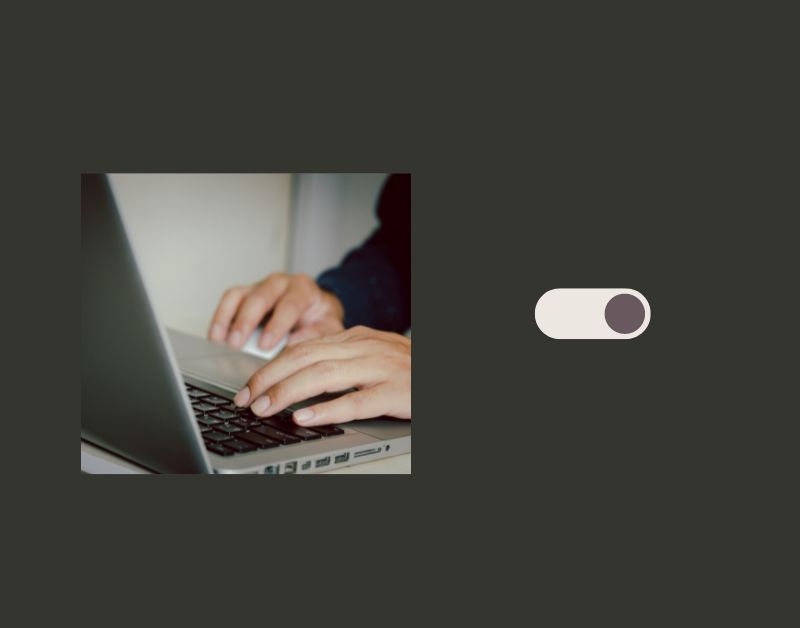In recent years, dark mode has taken the digital world by storm. From social media apps to operating systems, nearly every platform offers a dark mode option. But what exactly is dark mode, and why has it become so popular? At its core, dark mode refers to a color scheme where the background is dark (usually black or gray) and the text is light. This is the opposite of the traditional “light mode” that most websites use, where the background is white, and the text is dark.

Benefits of Using Dark Mode
Reduced Eye Strain
One of the main reasons for dark mode’s popularity is its ability to reduce eye strain. For those who spend long hours in front of screens—whether it’s working on a computer or scrolling through a phone—dark mode can provide a more comfortable visual experience, especially in low-light environments.
Extended Battery Life
Another significant benefit is its impact on battery life. Dark mode, especially on OLED screens, can extend battery life by reducing the energy required to light up the display. This is because OLED pixels that display black are essentially turned off, consuming no power.
Aesthetically Pleasing Design
Lastly, dark mode can be more aesthetically pleasing. Many users appreciate the sleek, modern look that dark themes provide, and it often helps content stand out in a more dramatic way than light mode.
How CSS Dark Mode Works
Understanding CSS Media Queries
At the heart of implementing dark mode in CSS is the use of media queries. Media queries allow developers to apply different styles based on certain conditions, such as the screen’s width, resolution, or—in the case of dark mode—user preferences.
The prefers-color-scheme Media Feature
To detect whether a user prefers dark mode or light mode, CSS provides a handy media feature called prefers-color-scheme. This media query checks if the user has their operating system set to dark or light mode and applies the appropriate styles accordingly.
Setting Up Basic Dark Mode in CSS
Step 1: Creating a Basic Light Mode Design
Before diving into dark mode, it’s essential to have a solid light mode design in place. A typical CSS setup might look like this:
body {
background-color: white;
color: black;
}Step 2: Adding Dark Mode Styles
Once your light mode is ready, you can add styles for dark mode using the prefers-color-scheme media query:
@media (prefers-color-scheme: dark) {
body {
background-color: black;
color: white;
}
}The prefers-color-scheme Media Query Explained
What is the prefers-color-scheme Query?
The prefers-color-scheme media query allows websites to detect whether the user prefers a light or dark interface and automatically adjust the styling accordingly.
Light vs. Dark Mode Preference Detection
This query returns one of two values: light or dark. If the user prefers light mode, the query will return light, and if the user prefers dark mode, it will return dark.
Building a CSS Dark Mode: Step-by-Step
Setting up HTML Structure
Before styling, ensure your HTML is structured properly. A basic HTML document might look like this:
<!DOCTYPE html>
<html lang="en">
<head>
<title>Dark Mode Example</title>
<link rel="stylesheet" href="styles.css">
</head>
<body>
<h1>Welcome to Dark Mode</h1>
<p>This is an example of implementing dark mode in CSS.</p>
</body>
</html>Creating CSS Styles for Light Mode
Now, let’s add some basic light mode styles:
body {
background-color: white;
color: black;
font-family: Arial, sans-serif;
}Applying Dark Mode Using prefers-color-scheme
Next, we can add the dark mode styles:
@media (prefers-color-scheme: dark) {
body {
background-color: #121212;
color: #e0e0e0;
}
}Customizing Dark Mode Design
Tweaking Color Schemes
A dark background doesn’t always have to be pure black. You can experiment with dark grays, blues, or even greens. Similarly, text can range from pure white to softer off-whites to reduce glare.
Adjusting Typography for Dark Mode
Lighter text may require adjustments in font size or weight to remain readable against a dark background. Be sure to check for legibility.
Modifying Images and Icons for Dark Mode
In dark mode, images with transparent backgrounds can sometimes appear with unwanted outlines. Use darker images or provide alternative images optimized for dark themes.
Implementing Dark Mode Toggle Button
How to Add a Dark Mode Toggle Button with JavaScript
Sometimes users may want to switch modes manually. Here’s a simple way to add a toggle button:
<button id="theme-toggle">Toggle Dark Mode</button>const toggleButton = document.getElementById('theme-toggle');
toggleButton.addEventListener('click', () => {
document.body.classList.toggle('dark-mode');
});CSS Classes for Manual Dark Mode Switching
In your CSS, create a .dark-mode class:
.dark-mode {
background-color: black;
color: white;
}Best Practices for CSS Dark Mode
Consistency in Design
Ensure that your dark mode design maintains consistency with your overall branding and user experience.
Contrast and Readability Considerations
Avoid low-contrast text in dark mode. Check color contrast ratios to ensure that text remains readable.
Testing Across Different Devices
Test your dark mode design across a variety of devices and browsers to ensure compatibility.
Dark Mode for Websites and Web Applications
Designing for User Preferences
Many users now expect websites to adapt to their system preferences, making dark mode an essential feature for modern web design.
Incorporating Dark Mode in Web Applications
For web applications, dark mode should be considered during the initial design phase to ensure seamless integration.
Advanced Dark Mode Techniques
Fine-Tuning Color Transitions
For smoother transitions between light and dark modes, use CSS transitions:
body {
transition: background-color 0.5s, color 0.5s;
}Using Variables for Color Schemes
CSS variables can simplify the management of color schemes:
:root {
--background-light: white;
--background-dark: #121212;
--text-light: black;
--text-dark: white;
}CSS Variables and Dark Mode
Switch the variables depending on the user’s preference:
@media (prefers-color-scheme: dark) {
:root {
--background: var(--background-dark);
--text: var
(--text-dark);
}
}Accessibility in Dark Mode
Ensuring Accessibility for Low-Vision Users
Always test dark mode for accessibility. Ensure that screen readers and assistive technologies can handle color changes effectively.
Contrast Ratios and Legibility
Use tools like the Web Content Accessibility Guidelines (WCAG) to check contrast ratios for text in dark mode.
Dark Mode SEO and Performance Considerations
How Dark Mode Impacts SEO
Dark mode does not directly affect SEO, but improving user experience can lead to better engagement metrics, which could improve SEO indirectly.
Performance Optimization for Dark Mode
Ensure that your dark mode doesn’t load unnecessary styles or scripts, which can slow down your website.
Challenges in Implementing CSS Dark Mode
Common Issues with Dark Mode
Issues like inconsistent design or poor readability are common when implementing dark mode. Address these through thorough testing.
Solutions for Cross-Browser Compatibility
Not all browsers fully support prefers-color-scheme. Ensure you test dark mode in multiple environments and provide fallbacks if needed.
Conclusion
As dark mode continues to rise in popularity, implementing it properly in CSS has become a must-have for modern web development. By using the prefers-color-scheme media query and customizing your designs for both light and dark preferences, you can offer users a better experience that’s easy on the eyes and more visually appealing. As we move forward, dark mode will likely become a standard in web design, making it essential for developers to understand how to implement and optimize it effectively.
FAQs
- How do I detect dark mode in CSS?
- You can detect dark mode using the
prefers-color-schememedia query.
- Can I add a dark mode toggle without JavaScript?
- No, a toggle switch for dark mode requires JavaScript for manual user control.
- What are the best colors to use in dark mode?
- Dark grays, blues, and subtle shades of black work well for backgrounds, while softer whites or off-whites are ideal for text.
- How does dark mode affect performance?
- Dark mode can improve performance on OLED screens by reducing power consumption, but CSS itself doesn’t impact performance significantly.
- Is dark mode better for accessibility?
- Dark mode can be beneficial for reducing eye strain, but it must be designed carefully to ensure adequate contrast for readability.
Introduction to CSS Doodle: Creating Patterns with Pure CSS
Arsalan Malik is a passionate Software Engineer and the Founder of Makemychance.com. A proud CDAC-qualified developer, Arsalan specializes in full-stack web development, with expertise in technologies like Node.js, PHP, WordPress, React, and modern CSS frameworks.
He actively shares his knowledge and insights with the developer community on platforms like Dev.to and engages with professionals worldwide through LinkedIn.
Arsalan believes in building real-world projects that not only solve problems but also educate and empower users. His mission is to make technology simple, accessible, and impactful for everyone.



